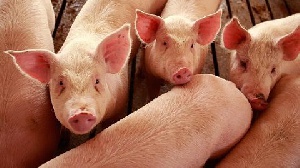The current economic challenges have pushed food prices above the means of most Ghanaians, who spend more than half of their earnings on food.
The situation has been compounded by the free fall of the cedi, which has weakened households’ purchasing power.
Ghanaian household expenses on food are 30 times more than what pertains in developed and other Western countries.
The Finder’s checks from various markets indicate that from July last year to date, prices of food items have risen by 70%.
For instance, the price of a sack of maize rose from GH?100 in July 2013 to GH?250 this month while a crate of eggs, which sold for GH?7 last year, is now GH?13.
An olonka of gari, which was sold for GH?2.50 in July last year, is now selling at GH?5 while 5 litres of vegetable cooking oil, which cost GH?15 in July 2013, now cost GH?35.
In July 2013, a tin of milk used to cost GH?1.50 but now sells for GH?2.50, and a tin of Milo, which was sold for GH?6, has risen to GH?10.
According to traders at various markets in Accra, an olonka of sugar is now GH?10 compared to GH?6 in July 2013.
The market women said 25kg of Texas rice, which sold for GH?650 in July 2013, now sells at GH?950 while a crate of tomatoes rose from GH?600 to GH?700 within the same period.
During the one-year period, a sack of onion jumped from GH?160 to GH?350 while the price of 1 kilo of chicken rose from GH?5.50 to GH?8 currently.
Butchers quoted 1 kilo of beef (cow meat) at GH?14 now, compared to GH?6 in July last year, while a sack of beans imported from Niger jumped from GH?150 last year July to GH?220.
Even the price of sachet water has doubled from 10 pesewas in July 2013 to 20 pesewas currently.
For bulk purchase, the price of USA Chicken Leg Quarter rose from GH?44.50 in January this year to GH?74 currently.
On the other hand, Brazil Chicken Leg Quarter now sells at GH?80 from GH?55.2 in January.
During the one-year period, the distributor price of 50kg US rice recorded 48.47% price hike, jumping from GH?114.5 in July 2013 to GH?168 as at July 14 this year.
Fifty kilogramme Vietnam fragrance rice also moved from GH?104.78 last year to GH?170.72 this month, an increase of 62%.
The erosion of the purchasing power of the poor is severe during spikes in food prices, since poor people devote a larger share of their total earnings on food than do wealthier people.
The United Nations Development Programme (UNDP) in a study in 2012 found that Ghanaians spend about 62% of their incomes on sourcing food; the situation has been exacerbated in some areas of the country where the cost of such things as rent and commuting are higher.
Ironically, people living in rural Ghana, where almost all of the country’s food crops are produced, spend more on food than their urban counterparts, which is a deviation from other regions where net food buyers are mostly higher income urban residents.
Smallholder farmers devote most of their resources to growing food but their farm productivity is too low to meet all their food needs – so much of their cash income go toward food rather than to other goods.
In Ghana, food and fuel price inflation have led to a higher cost of living while many wages in the country have remained stagnant.
General News of Tuesday, 22 July 2014
Source: Finder Newspaper
70% hike in food prices; in just one year
Entertainment















